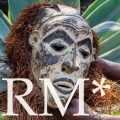This means that we are attentive to the unmet needs of the collection and are taking responsibility for responding to these in ways that encourages community access and inclusion.
We are located at Queen’s University, in Kingston, Ont., on the territories of the Anishinaabek, Haudenosaunee and Huron-Wendat, in a city where over 7,000 people identify as First Nations, Inuit or Métis.
The African art collection, named after donors Justin and Elisabeth Lang, consists of approximately 600 three-dimensional pieces that originate from 19 West African countries.
This collection is part of a cluster of similar collections in North America that made their way via European art markets.
In 1938, Elisabeth Lang (nee Von Taussig), fleeing from Nazi-occupied Vienna, started the collection with a Baule figure from Ivory Coast that she purchased in an Amsterdam junk shop.
We know very little about the contexts in which the individual pieces were produced, bought and sold in Africa, from as far south as Angola to as far north as Mauritania.
From the early 1900s, cultural belongings from West Africa were placed on the art market directly from European, mainly French, colonies. Buyers and sellers were colonial officials, missionaries or in the military.


